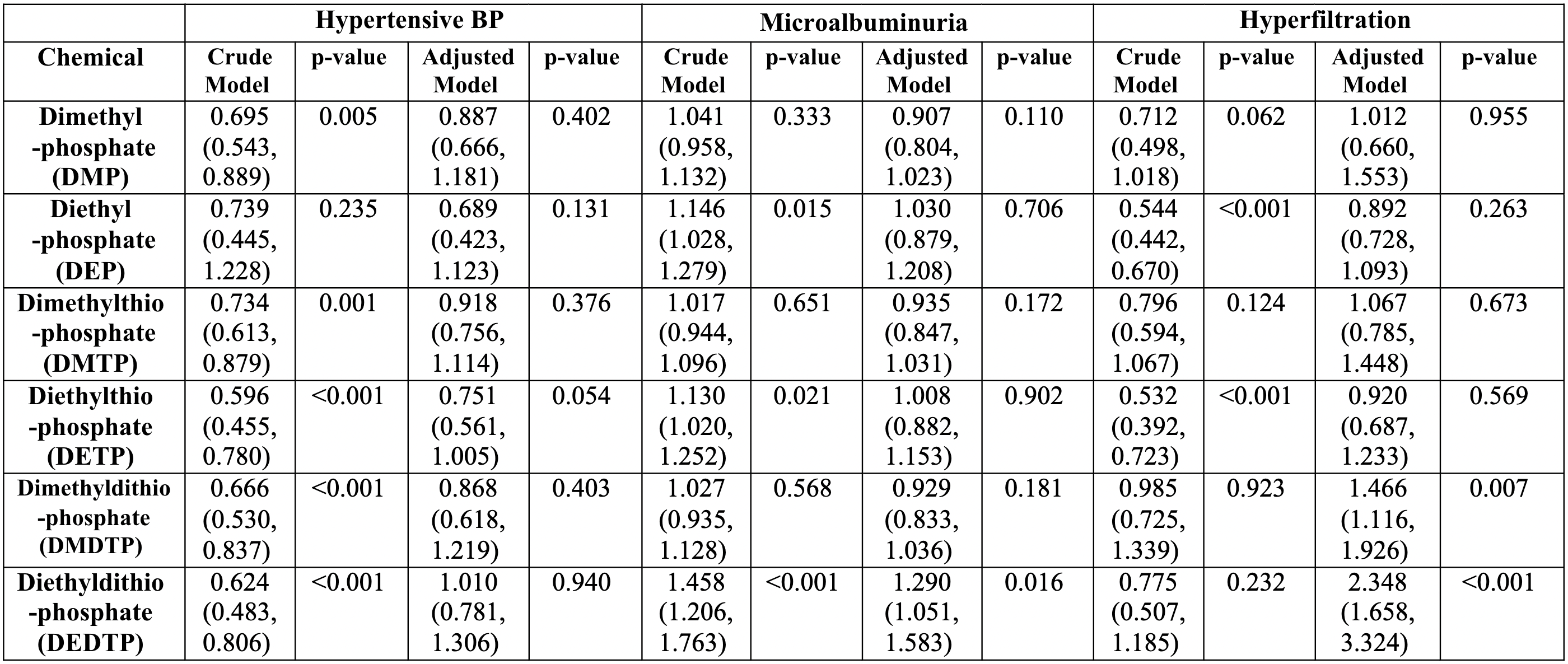Nephrology 4
Session: Nephrology 4
606 - Exploring the Cardiometabolic and Kidney Outcomes of Insecticides on Children
Sunday, April 27, 2025
8:30am - 10:45am HST
Publication Number: 606.4975
Mahie M. Abdullah, Cohen Children's Medical Center, Bronx, NY, United States; Liam P. Connolly, Cohen Children’s Medical Center, Manhasset, NY, United States; Carol L. Shen, Donald and Barbara Zucker School of Medicine at Hofstra/Northwell, New Hyde Park, NY, United States; Abby Basalely, Cohen Childrens Medical Center Northwell Health, New Hyde park, NY, United States; Laura Castellanos Reyes, Cohen Children's Medical Center, New Hyde Park, NY, United States; Pamela Singer, Cohen Children's Medical Center, New Hyde Park, NY, United States; Christine Sethna, Cohen Childrens Medical Center, Northwell, New Hyde Park, NY, United States

Mahie M. Abdullah, Bachelor of Science (he/him/his)
Clinical Research Coordinator
Cohen Children's Medical Center
Bronx, New York, United States
Presenting Author(s)
Background: Despite undergoing strict health regulations, numerous studies report a possible link between exposure to specific insecticides and negative cardiometabolic and kidney outcomes (CKOs) within the adult population. Exposure to high concentrations of organophosphate insecticides, including 3,5,6-trichloro-2-pyridinol (TCPy), oxypyrimidine, and para-nitrophenol, was found to be associated with hypertension. Furthermore, high levels of organochloride insecticides such as hexachlorocyclohexane and endosulfan were found to be associated with the development of chronic kidney disease. Despite these findings, little is known about how insecticide exposure (IE) may impact CKOs in children.
Objective: To investigate whether IE is associated with higher blood pressure (BP), microalbuminuria and hyperfiltration in children.
Design/Methods: A cohort of children < 18 years old who participated in the National Health and Nutritional Examination Survey (NHANES) from 2015-2020 with measured urine concentrations of insecticides were included. IEs were dimethylphosphate (DMP), diethylphosphate (DEP), dimethylthiophosphate (DMTP), diethylthiophosphate (DETP), dimethyldithiophosphate (DMDTP), and diethyldithiophosphate (DEDTP). CKOs were systolic/diastolic BP index (BP/95th percentile for age, sex and height), hypertensive BP (defined by AAP 2017), microalbuminuria (defined as albumin:creatinine >30 g/g) and hyperfiltration (defined as U25 eGFR >135 ml/min per 1.73 m2). Using complex sample statistics, linear and logistic regression analysis adjusted for age, sex, body mass index (BMI) z-score and poverty income ratio (PIR) examined the association of IEs individually with BP, microalbuminuria and hyperfiltration. P-value significance was set at < 0.0167 to account for multiple comparisons.
Results: Demographic and clinical characteristics of the 2928 children included in the study are presented in Table 1. In adjusted regression models, higher IE was not associated with high systolic, diastolic BP or hypertensive BP (p > 0.05). In adjusted models, higher DEDTP was associated with microalbuminuria (p=0.016) and hyperfiltration (p < 0.001). Higher DMDTP was associated with hyperfiltration (p=0.007). See Tables 2 and 3.
Conclusion(s): In a nationally representative population of children, greater IE was associated with microalbuminuria and hyperfiltration, highlighting the potential hazards of exposure of insecticides at a young age. Further research is needed to understand the underlying mechanisms that lead to such clinical abnormalities in this population.
Table 1. Demographic characteristics in the overall study population
.png) BMI Z-Score = Body Mass Index Z-Score, SBP = Systolic Blood Pressure, DBP = Diastolic Blood Pressure, eGFR = estimated Glomerular Filtration Rate.
BMI Z-Score = Body Mass Index Z-Score, SBP = Systolic Blood Pressure, DBP = Diastolic Blood Pressure, eGFR = estimated Glomerular Filtration Rate.Table 2. General linear models
.png)
Table 3. Logistic regression models


